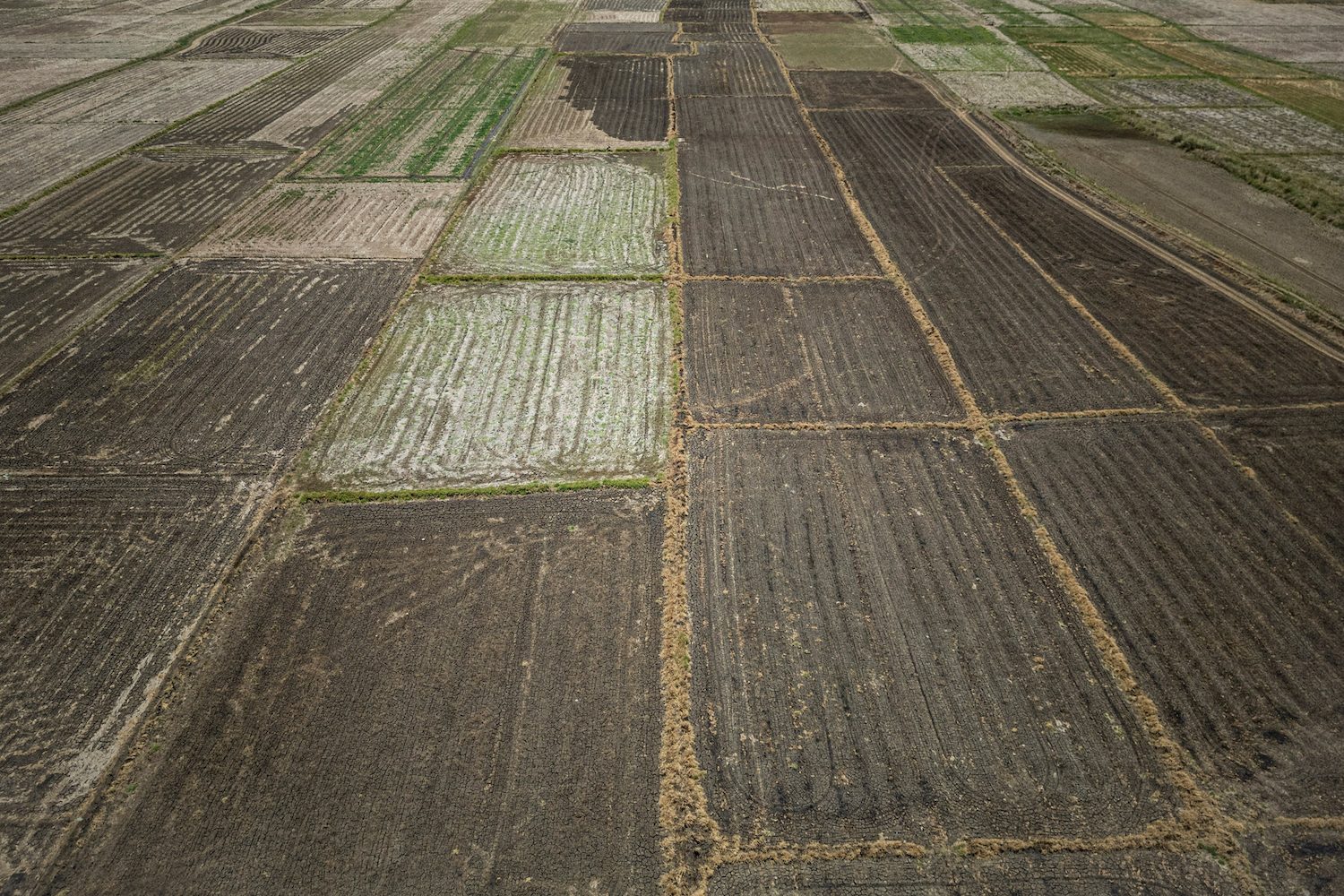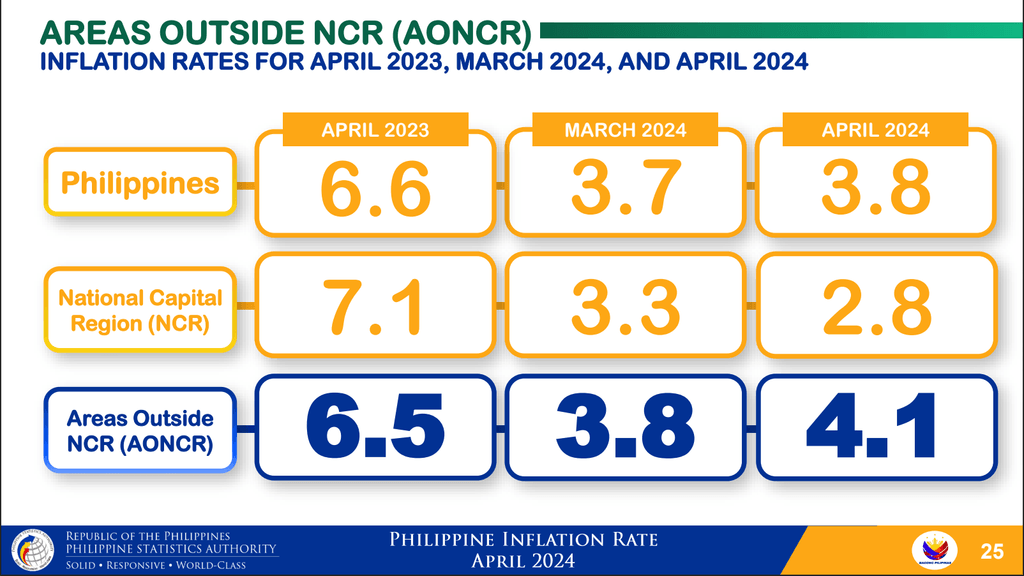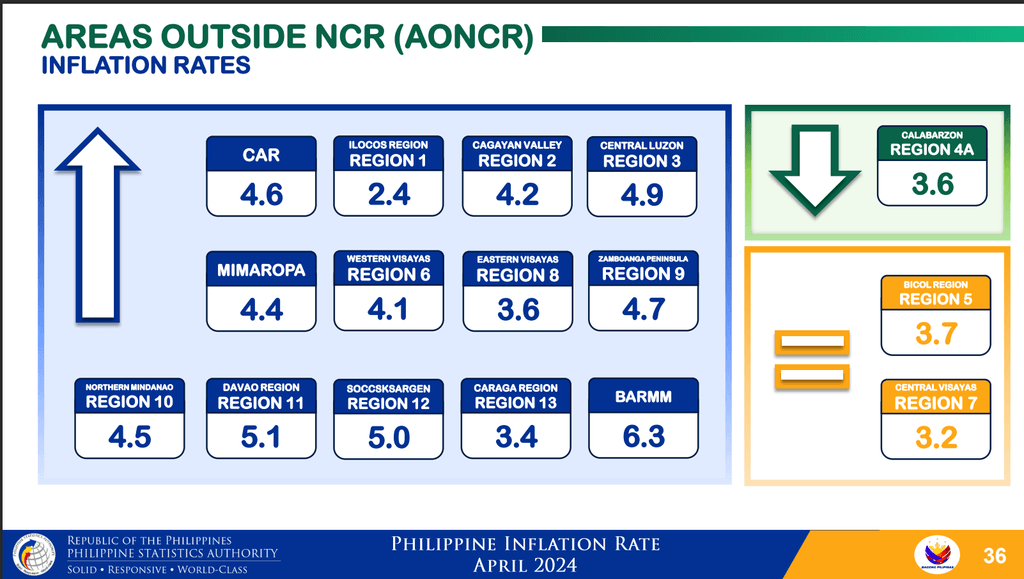SUMMARY
This is AI generated summarization, which may have errors. For context, always refer to the full article.

MANILA, Philippines – Poor households and areas outside Metro Manila were hit harder by inflation in April, driven mainly by soaring rice prices, El Niño damaging crops, and the peso’s depreciation against the dollar.
The Philippine Statistics Authority (PSA) on Tuesday, May 7, reported that the national-level inflation rate in April inched up to 3.8%, which is slightly higher than the 3.7% recorded last March.
It remains within the government’s target band of 2% to 4%, but marks the third straight month of increasing inflation.
Year-to-date, average inflation stands at 3.4%.
The Bangko Sentral ng Pilipinas (BSP) earlier projected April inflation would settle within the 3.5% to 4.3% range. A BusinessWorld poll of 16 economists yielded a median estimate of 4.1%. This means that inflation was lower than analysts’ expectations.
Inflation was mostly driven by acceleration in the prices of food and non-alcoholic beverages (from 5.6% in March to 6% in April). Vegetables (-2.5% to 4.3%) and fish (-0.9% to 0.4%) posted increases.
Rice prices, which comprise bulk of the inflation figure, saw a deceleration from 24.4% in March to 23.9% in April. This, however, is still significantly high.
Aside from food and non-alcoholic beverages, the transport index also influenced overall inflation, rising from 2.1% in March to 2.6% in April. Gasoline (0.8% to 3.3%) and diesel (-0.1% to 4.2%) both went up.
Low-income households
Inflation rate for the bottom 30% income households rose to 5.2% in April, higher than the 4.6% in March.
The PSA tweaks how inflation is computed for poor households to better reflect consumption patterns and how price changes affect the most financially vulnerable segment of the population.
Inflation of food and non-alcoholic beverages for this income segment reached 8.1%.
Regions
Inflation in areas outside Metro Manila climbed to 4.1% in April from 3.8% in March.
Meanwhile, inflation in the National Capital Region eased to 2.8% from 3.3%.

There were 13 regions that posted higher inflation rates in April, with the Bangsamoro Autonomous Region in Muslim Mindanao leading the pack at 6.3%.
Inflation rates were unchanged in Bicol (3.7%) and Central Visayas (3.2%).
Only Calabarzon posted a lower inflation rate at 3.6%.

‘Need for vigilance’
In a statement, National Economic and Development Authority Secretary Arsenio Balisacan acknowledged that while inflation at the national level was within target, El Niño and global disruptions exerted upward pressure on food prices.
“While this increase remains within the government’s target range, it underscores the need for vigilance,” Balisacan said.
Balisacan cited Administrative Order No. 20, which removes non-tariff barriers and eases agricultural imports, as a measure to combat inflation. Agriculture Secretary Francisco Tiu Laurel Jr., however, was quoted as saying that they were not consulted on the matter.
The BSP also noted that inflation continues to lean toward the upside, as possible price pressures are linked to higher transport costs, food, electricity rates, and global oil prices.
“Looking ahead, the Monetary Board will consider the latest inflation and Q1 2024 GDP (gross domestic product) outturns, among other information, in its upcoming monetary policy meeting on [May 16],” the BSP said.
The Philippines’ GDP for the first quarter of 2024 will be announced on Thursday, May 9.
Some areas in the country have declared a state of calamity due to the destruction caused by prolonged dry weather conditions and declining water sources. – Rappler.com
Add a comment
How does this make you feel?
![[In This Economy] El Niño-nomics: How intense heat is drying up the Philippine economy](https://www.rappler.com/tachyon/2024/05/TL-El-nino-nomics-May-3-2024.jpg?fit=449%2C449)
![[EDITORIAL] Apat na taon na lang Ginoong Marcos, ‘di na puwede ang papetiks-petiks](https://www.rappler.com/tachyon/2024/07/animated-bongbong-marcos-2024-sona-day-carousel.jpg?resize=257%2C257&crop=280px%2C0px%2C720px%2C720px)
![[In This Economy] Delulunomics: Kailan magiging upper-middle income country ang Pilipinas?](https://www.rappler.com/tachyon/2024/07/in-this-economy-upper-middle-income-country.jpg?resize=257%2C257&crop=421px%2C0px%2C1080px%2C1080px)

![[EDITORIAL] Marcos Year 2: Hilong-talilong](https://www.rappler.com/tachyon/2024/07/animated-bongbong-marcos-2nd-sona-carousel.jpg?resize=257%2C257&crop=136px%2C0px%2C720px%2C720px)
![[Newspoint] A fighting presence](https://www.rappler.com/tachyon/2024/07/thought-leaders-a-fighting-presence.jpg?resize=257%2C257&crop=441px%2C0px%2C1080px%2C1080px)
There are no comments yet. Add your comment to start the conversation.